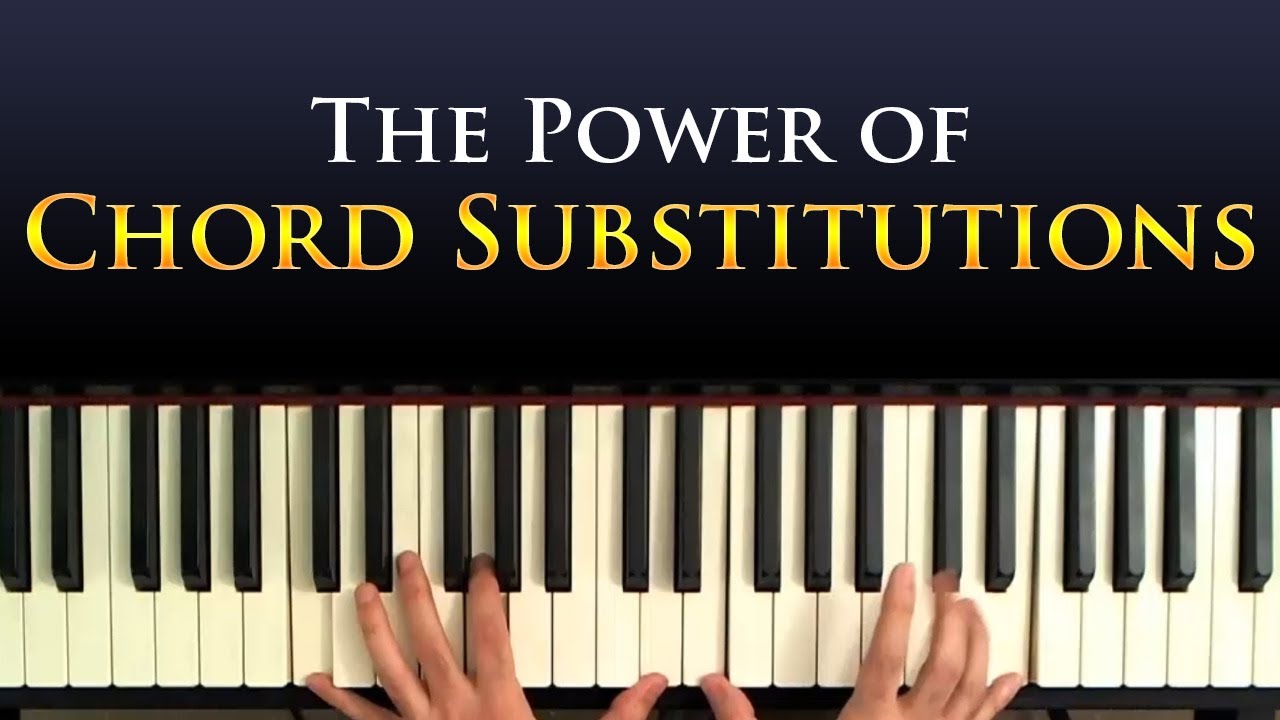Chord substitutions are a valuable tool for musicians looking to add variety and interest to their compositions and arrangements. By replacing one chord with another that shares some of the same notes or tonal qualities, musicians can create new harmonic textures and progressions that can lead to unexpected and exciting musical moments.
The concept of chord substitutions is based on the idea that chords are not isolated entities but are part of a larger harmonic language. Each chord has a specific tonal function within a key, and by understanding these functions, musicians can find alternative chords that can fulfill the same function.
One common chord substitution is the use of a tritone substitution. A tritone is an interval of three whole steps (or six half steps) and is found between the third and seventh notes of a dominant 7th chord. For example, in the key of C, the G7 chord contains the notes G, B, D, and F. The tritone interval is between B and F. By replacing the G7 chord with its tritone substitute (Db7), the same tension and resolution can be achieved, as the Db7 chord also contains the tritone interval between F and Cb.
Here is an example:
Original progression: Cmaj7 - G7 - Cmaj7
With tritone substitution: Cmaj7 - Db7 - Cmaj7
Listen to the difference in sound between the two progressions. The tritone substitution adds a new color and tension to the progression.
Another common chord substitution is the use of a chord with a common tone. This involves replacing a chord with another one that shares one or more of the same notes. For example, the C major chord can be replaced with an A minor chord, as both chords share the same notes (C, E, and G). This substitution can add a new tonal color or texture to a progression and can create an interesting contrast between major and minor chords.
Here is an example:
Original progression: Cmaj7 - Am7 - Dm7 - G7
With common tone substitution: Am7 - Am7/G - Dm7 - G7
Listen to the difference in sound between the two progressions. The common tone substitution creates a smoother transition between the Cmaj7 and Am7 chords and adds a new tonal color to the progression.
Chord substitutions can also be used to create chord progressions that move in unexpected ways. For example, instead of using a standard ii-V-I progression (such as Dm7-G7-Cmaj7), a musician can substitute the V chord with a dominant 7th chord a half step above (such as Ab7), creating a ii-Ab7-Cmaj7 progression. This creates a chromatic movement in the bass line and can add a sense of tension and release to the progression.
Here is an example:
Original progression: Dm7 - G7 - Cmaj7
With chord substitution: Dm7 - Ab7 - Cmaj7
Listen to the difference in sound between the two progressions. The chord substitution creates a chromatic movement in the bass line and adds a sense of tension and release to the progression.
In conclusion, chord substitutions are a powerful tool that can add depth, variety, and interest to musical compositions and arrangements. By understanding the tonal functions of chords and the relationships between them, musicians can use chord substitutions to create new harmonic textures and progressions that can lead to unexpected and exciting musical moments.

Comments